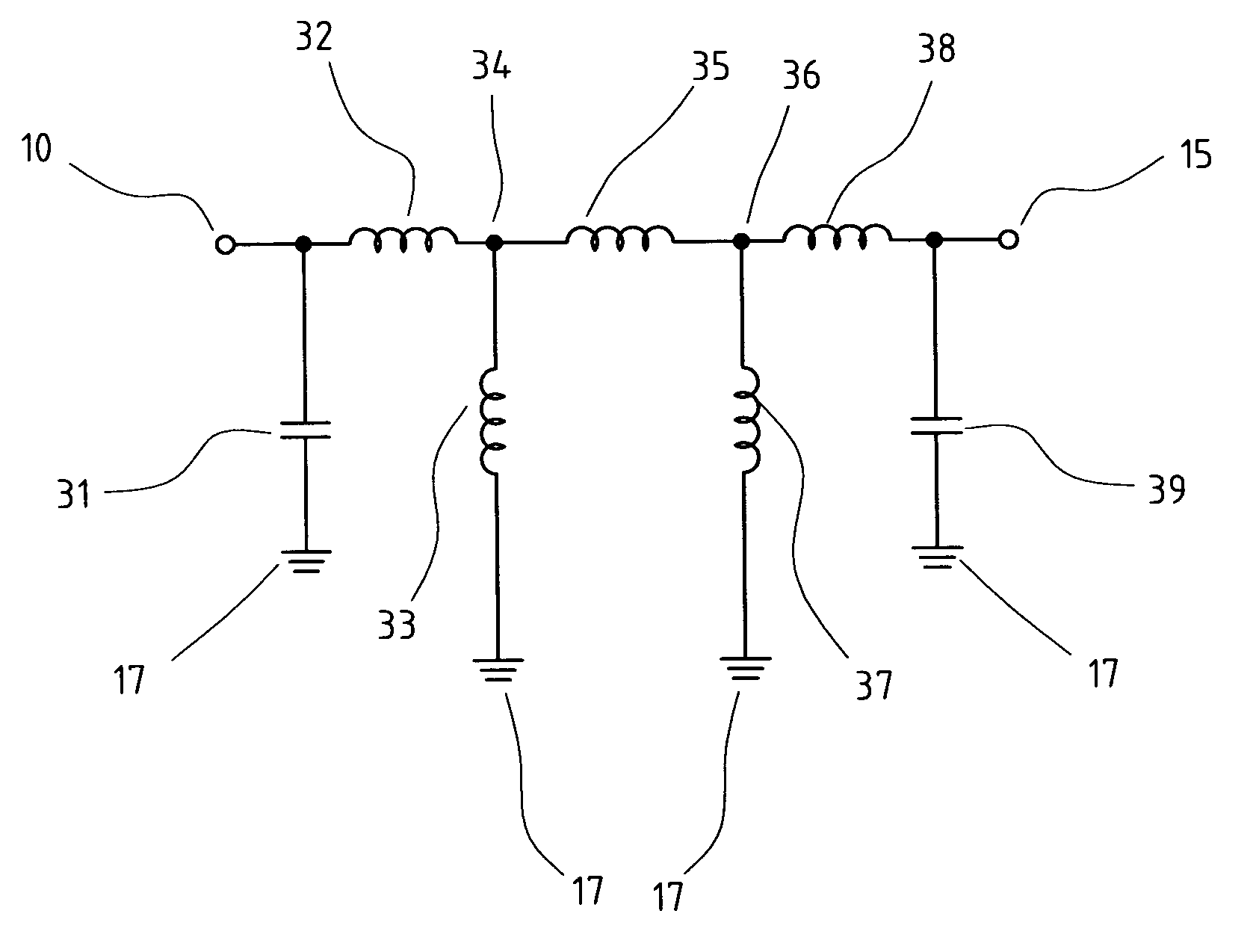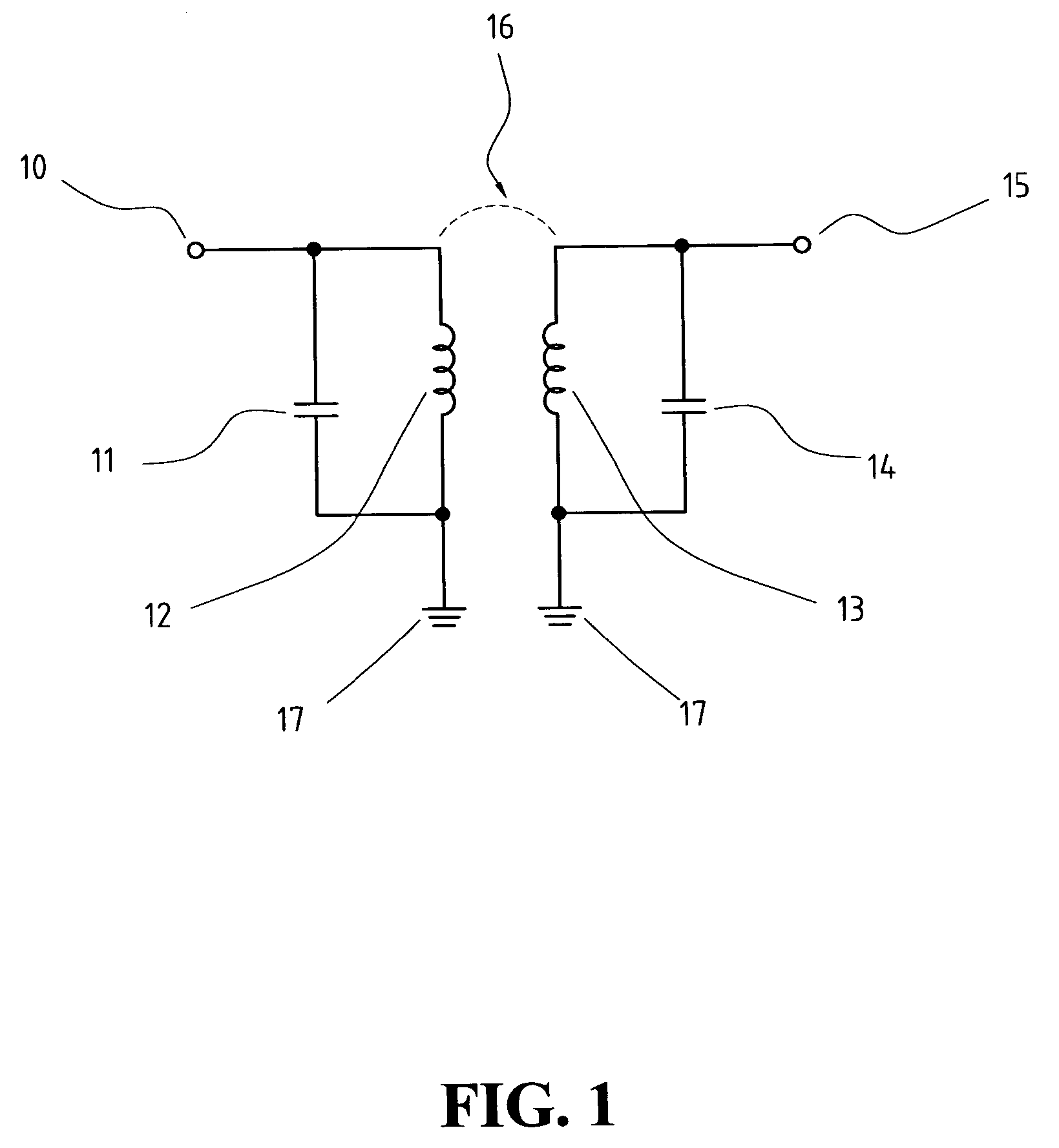Pi-type band pass filter
a band pass filter and filter technology, applied in the field of band pass filters, can solve the problems of difficult design of narrow band pass filters with high selectivity, affecting the characteristics of filters, and the likely introduction of additional noise by dielectric coupling in circuits, so as to improve the selectivity of filters and reduce the coupling coefficient
- Summary
- Abstract
- Description
- Claims
- Application Information
AI Technical Summary
Benefits of technology
Problems solved by technology
Method used
Image
Examples
Embodiment Construction
FIG. 3 shows a π-type band pass filter of the present invention. Input signals enter the filter from the input signal end 10. A first resonant capacitor 31 is placed between input signal end 10 and ground 17, and a first serial inductor 32 is placed between input signal end 10 and a first junction 34. A first parallel inductor 33 is placed between first junction 34 and ground 17. A compensating inductor 35 is placed between first junction 34 and a second junction 36. A second parallel inductor 37 is placed between second junction 36 and ground 17. A second serial inductor 38 is placed between second junction 36 and a signal output end 10. A second resonant capacitor 39 is placed between signal output end 15 and ground 17. The signal output end 15 outputs signals. First and second resonant capacitors 31, 39 have the same capacitance, first and second serial inductors 32, 38 have the same inductance, and first and second parallel inductors 33, 37 have the same inductance.
When signals...
PUM
 Login to View More
Login to View More Abstract
Description
Claims
Application Information
 Login to View More
Login to View More - R&D
- Intellectual Property
- Life Sciences
- Materials
- Tech Scout
- Unparalleled Data Quality
- Higher Quality Content
- 60% Fewer Hallucinations
Browse by: Latest US Patents, China's latest patents, Technical Efficacy Thesaurus, Application Domain, Technology Topic, Popular Technical Reports.
© 2025 PatSnap. All rights reserved.Legal|Privacy policy|Modern Slavery Act Transparency Statement|Sitemap|About US| Contact US: help@patsnap.com



